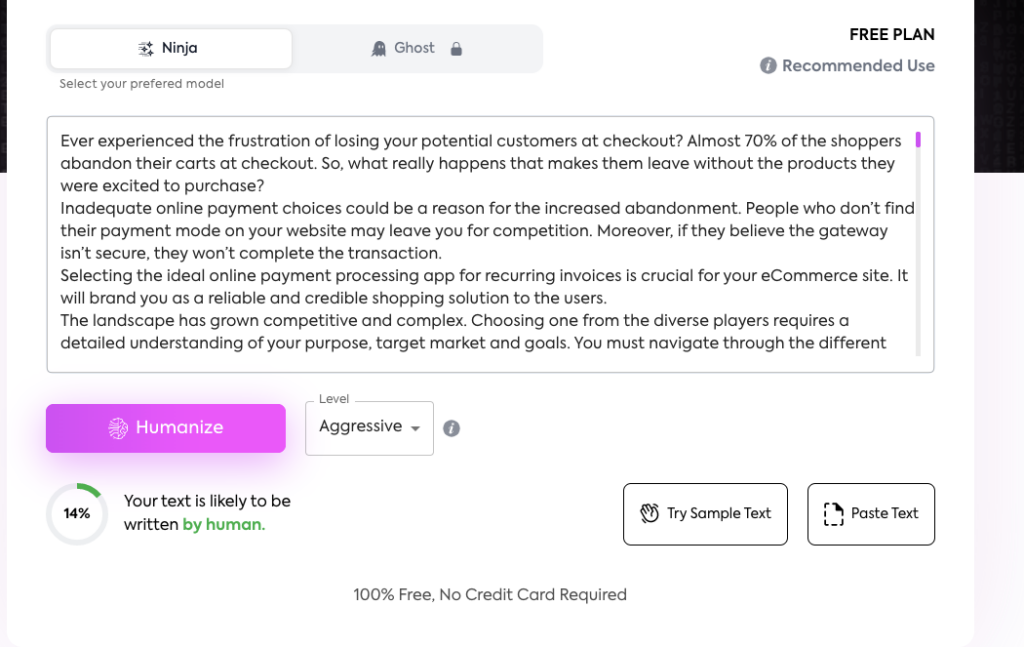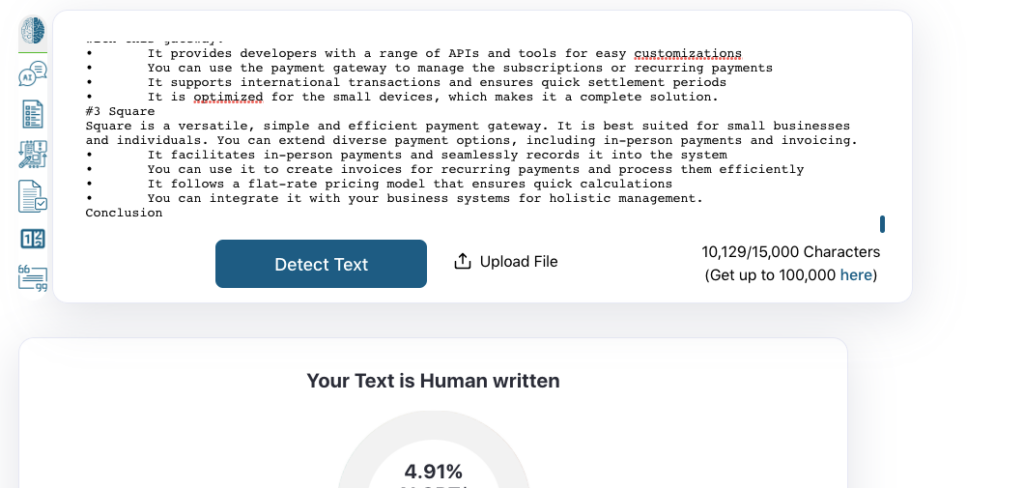Scared of losing your potential customers at checkout? Does it make you question your inherent systems and processes? Want to know why customers, who were so eager to make the purchase, left so suddenly?
Inadequate online payment choices could be a reason for the increased abandonment. People who don’t find their payment mode on your website may leave you for competition. Moreover, if they believe the gateway isn’t secure, they won’t complete the transaction.
Selecting the ideal online payment processing app for recurring invoices is crucial for your eCommerce site. It will brand you as a reliable and credible shopping solution to the users.
The landscape has grown competitive and complex. Choosing one from the diverse players requires a detailed understanding of your purpose, target market, and goals. You must navigate different factors like security, compatibility, and reach to find the perfect solution for your eCommerce site.
This article will take you through the deciding factors and popular online payment gateways to help you make a fitting selection.
What is a Payment Gateway?
A payment gateway is a virtual bridge that connects the customer’s chosen payment method with the merchant’s payment account. With this gateway, you can ensure a smooth ride for your assets that too without hiccups.
These gateways are designed to protect the data and transactions via encrypted transmissions. That’s why your users will confidently share their transaction information with your website.
The Key Components
- Encryption is core to your online payment gateways. It can safeguard your data from threats and vulnerabilities. You might have noticed several gateways that come with an advanced level of encryption preventing unauthorized entry.
- The payment processor is the facilitator of the transactions. Your processor will communicate with the banks on behalf of the client to confirm fund availability and authorize the transaction,
- API: The API connects the client’s website or application with the online payment gateway seamlessly. You can easily add payment methods to your website and ensure quicker checkouts.
- The virtual terminal is where the clients will process the transactions manually. This is important if your customers place orders via phone or mail.
- Security Protocols: This is one of the most important elements of your online payment gateway. It should be compliant with PCI DSS for risk mitigation. This compliance can ensure adherence to standard payment practices.
Online Payment Gateway Selection Considerations
You must consider several factors when choosing the online payment gateway for your business. It is crucial to analyze the payment gateways from experience and security perspectives before finalizing them. You must consider these top 10 factors before making the final selection.
#1 Security
You cannot move ahead without prioritizing the security aspects. Your customer’s trust in your business depends on this factor.
- You must look for an online payment gateway that prioritizes encryption and tokenization.
- It should have high standards and relevant best practices to implement security protocols.
- Adherence to PCI DSS standards is a must for the payment gateway. This would help protect your sensitive data and reduce data breaches.
When you keep security at the core of your selection criteria, you can ensure a highly transparent and secure solution. By emphasizing security as a core selection criterion, you ensure a trustworthy and secure solution for your customers. The Chief Security Officer (CSO) at FacilePay emphasizes, “Security is paramount in building trust and reliability in the digital payment landscape, underscoring our commitment to delivering top-notch security measures for our clients.”
#2 Compatibility
If the best online payment gateways are not compatible with your website, they may not help you with smooth checkouts. You must check if the gateways can seamlessly connect with your existing systems and transfer the data.
An incompatible system results in technical and usability issues. You will notice a decline in the customer’s experience, which translates into lost sales for business.
- Look at the integration options offered by the online payment gateway.
- Test the integration options and see how they fit into your site
- Make sure to look for options (plugins, APIs) that can easily align the gateway with your platform.
#3 Accepted Payment Methods
Your user may abandon the cart if they don’t find their desired payment method on your website or application. Offering diverse online payment methods can improve the experience and result in completed transactions.
- Look for gateways that embrace traditional payment methods- credit cards, net banking
- Consider gateways that extend digital wallets and new-age payment methods
- Ensure they cover all the user-preferred payment modes
- Look for flexibility in payment method additions while customizing
#4 Fees and Pricing
Each online payment gateway has a predefined fee structure that includes the transaction fee and additional costs.
- Few online payment gateways offer a flat-fee model.
- Some gateways extend a percentage-based model.
- There are a few others that include both pricing structures
- Evaluate your business to understand the transaction volume and average transaction cost when selecting the pricing model
- Avoid the hidden fees by evaluating the cost breakup.
#5 Global Reach
The digital world has blurred the geographical boundaries. This has helped your business expand into newer territories and embrace every opportunity. It is equally important for your payment gateways to widen their reach.
- Choose a gateway that extends the multi-currency feature.
- It should easily convert foreign currencies to deliver an excellent experience.
- They must streamline international payments and make way for secure transactions
#6 User Experience
A smooth user experience will lure your customers to your business website. It can improve retention. You can ensure a seamless experience at the checkout by simplifying the process. The online payment gateway plays a crucial role in ensuring simplified checkouts.
- Look for a usable and inclusive interface
- Evaluate the gateway for simplified transactions
A negative experience equals a lost conversion opportunity. You should strive hard to improve the user’s experience.
#7 Mobile Friendly
At least 76% of shoppers in the US purchase things online via smartphones.
- You must create responsive and adaptable interfaces that can flexibly adjust to the different screens and resolutions.
- If your user faces friction while accessing the payment on mobile devices, they will abandon the cart immediately.
- Choose an online payment gateway that positively impacts a mobile user.
#8 Settlement Period
You must assess the settlement period while selecting the payment gateway. It is the time taken by the payment gateway to move the funds into your bank account.
- Opt for shorter periods as that can impact your cash flow positively
- Look for gateways that offer seamless settlements that improve business value
Ensure the settlement period is aligned with your business’s financial needs and supports your cash flow goals.
#9 Customer Support
The payment gateway is a system that can face technical glitches and other issues. Your customers may grapple with payment-related issues, which aren’t internal to your business.
The provider’s support system can help you overcome the issues and enhance your customer’s experience.
- They should offer diverse support channels to resolve your queries.
- know the ideal response time and see if the service provider matches the standard
- Look for providers who are available and accessible 24/7 through the support channels.
Proactive customer support can minimize errors and improve the reliability of these transactions.
#10 Customizations
Your business may not pose the same requirements as your competition. So, your competitor’s payment gateway may not support your goals.
- Assess the customizations and flexibility offered by the payment gateway.
- Check if there are features that can help personalize the checkout page.
- Ensure the checkout system is aligned with your brand’s identity before proceeding with the selection.
Top 3 Payment Gateways
PayPal, Stripe, and Square are reigning in the payment gateway niche. Here’s an overview of all three.
#1 PayPal
This is one of the leading payment gateways that has gained a global following. You can use the platform to foster secure transactions and minimize the risks. It is best suited for small and medium-sized businesses aspiring to a global reach.
- It’s versatile and embraces all payment methods including debit and credit cards
- It integrates with eCommerce websites and applications
- It extends a buyer trust program that improves credibility and reliability.
- The gateway supports multiple currencies and offers your business global reach.
#2 Stripe
Stripe is developer-friendly and can help build authoritative payment solutions. It is suited for all business sizes and types. You will find an array of payment solutions with this gateway.
- It provides developers with a range of APIs and tools for easy customization.
- You can use the payment gateway to manage the subscriptions or recurring payments.
- It supports international transactions and ensures quick settlement periods.
- It is optimized for small devices, which makes it a complete solution.
#3 Square
Square is simple and versatile. It is best suited for small businesses and individuals. It helps with payments and invoicing, thus streamlining financial management.
- It facilitates in-person payments and seamlessly records them into the system.
- You can use it to create invoices for recurring payments and process them efficiently.
- You must pay a flat fee for every transaction
- You can integrate it with your business systems for holistic management.
Conclusion
Evaluating key factors such as security, compatibility, and pricing is crucial in finding the right payment gateway for the business. You must also look for mobile-responsive and experiential solutions. If they are accessible and inclusive, it will reimagine your financial operations.
Popular payment gateways such as PayPal, Stripe, and Square can help customize your payments and improve the checkout processes. You must consider monitoring the gateways and look for preferred modes to foster customizations.


https://smallseotools.com/view-report/3d51edc1aa238763019fb2b440548b16/
https://smallseotools.com/view-report/c6101b6d542eb2e8d959a57ce7cf8213/






